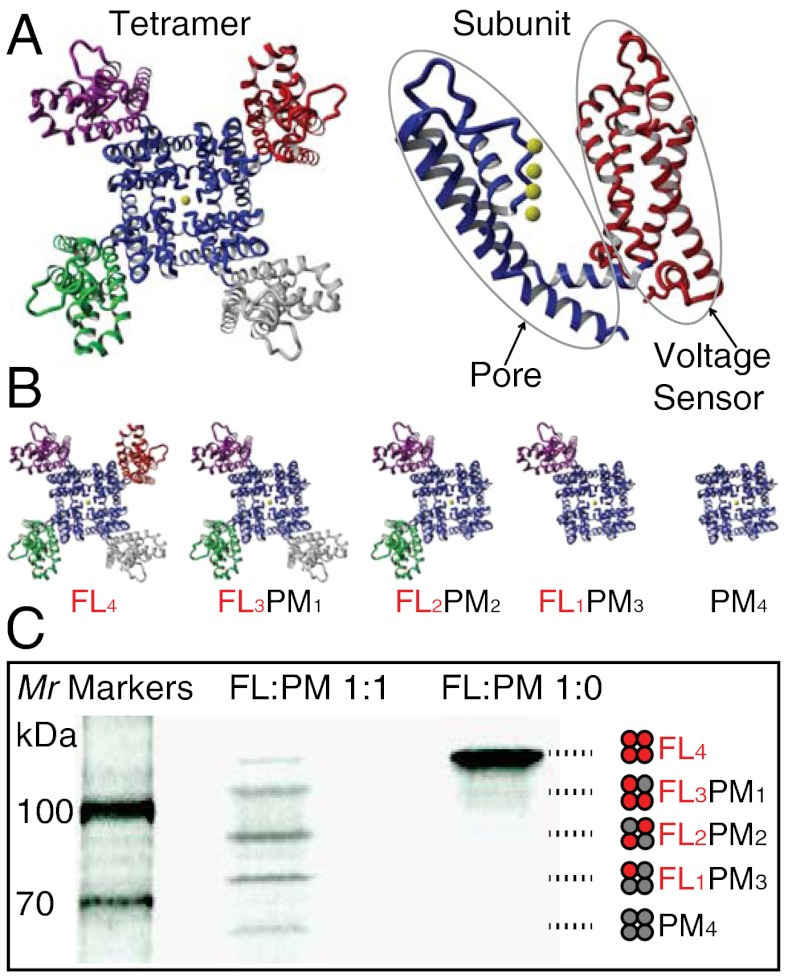Fig. 1.
Modularity of Kv channels. (A) Structural modularity of Kv channels. (Left) The crystal structure of the Kv1.2-Kv2.1 chimeric channel (Protein Data Bank ID code 2R9R) (28), a member of the Shaker family of eukaryotic Kv channels, showing the four well separated voltage-sensor modules, S1–S4 (red, magenta, green, and gray), surrounding a pore module (blue). (Right) A single subunit of the Kv1.2-Kv2.1 chimera with the sensor and pore depicted in red and blue. The yellow spheres represent K+ ions. All structures were rendered using YASARA (http://www.yasara.org). (B) Representations of tetrameric assemblies with different numbers of voltage sensors (from left to right: four, three, two, one, and zero). (C) Assembly modularity of KvLm: heterotetramers assembled by coexpressing FL and PM polypeptides in a cell-free expression system. The tetramers were separated in a 7.5% Tris-HCl SDS polyacrylamide gel. The polypeptides were labeled with L-[35S]methionine and visualized by autoradiography. KvLm DNA ratios in the expression system were (FL∶PM): 1∶1 and 1∶0. Empty lanes were left between samples to avoid cross-contamination when extracting tetrameric protein assemblies from the gel. The cartoons illustrate the combinations of subunits in the tetramers. Note that FL2PM2 can adopt two possible configurations (i.e., FL subunits adjacent to each other or diagonally opposed); only one is depicted here for clarity.

